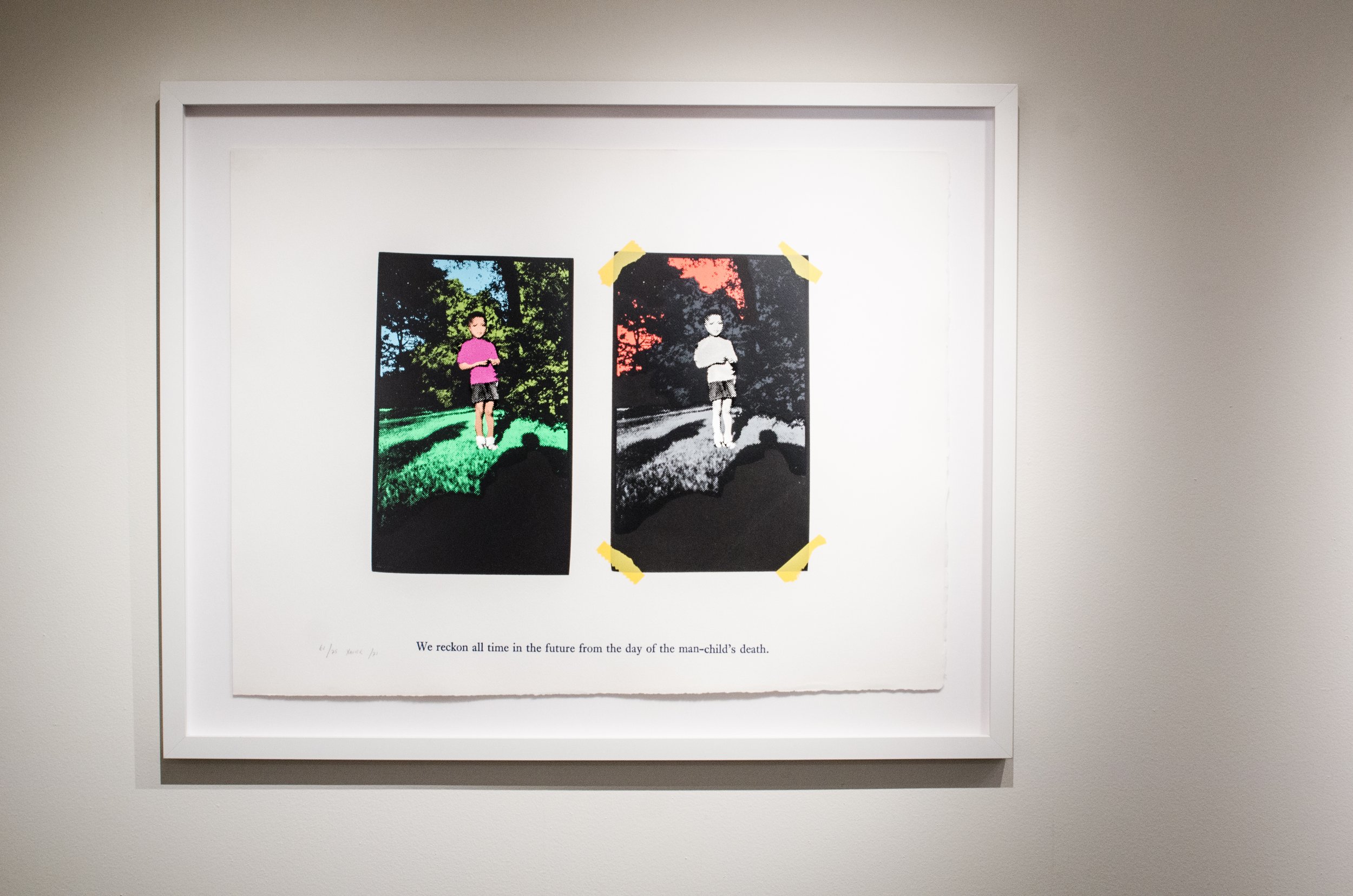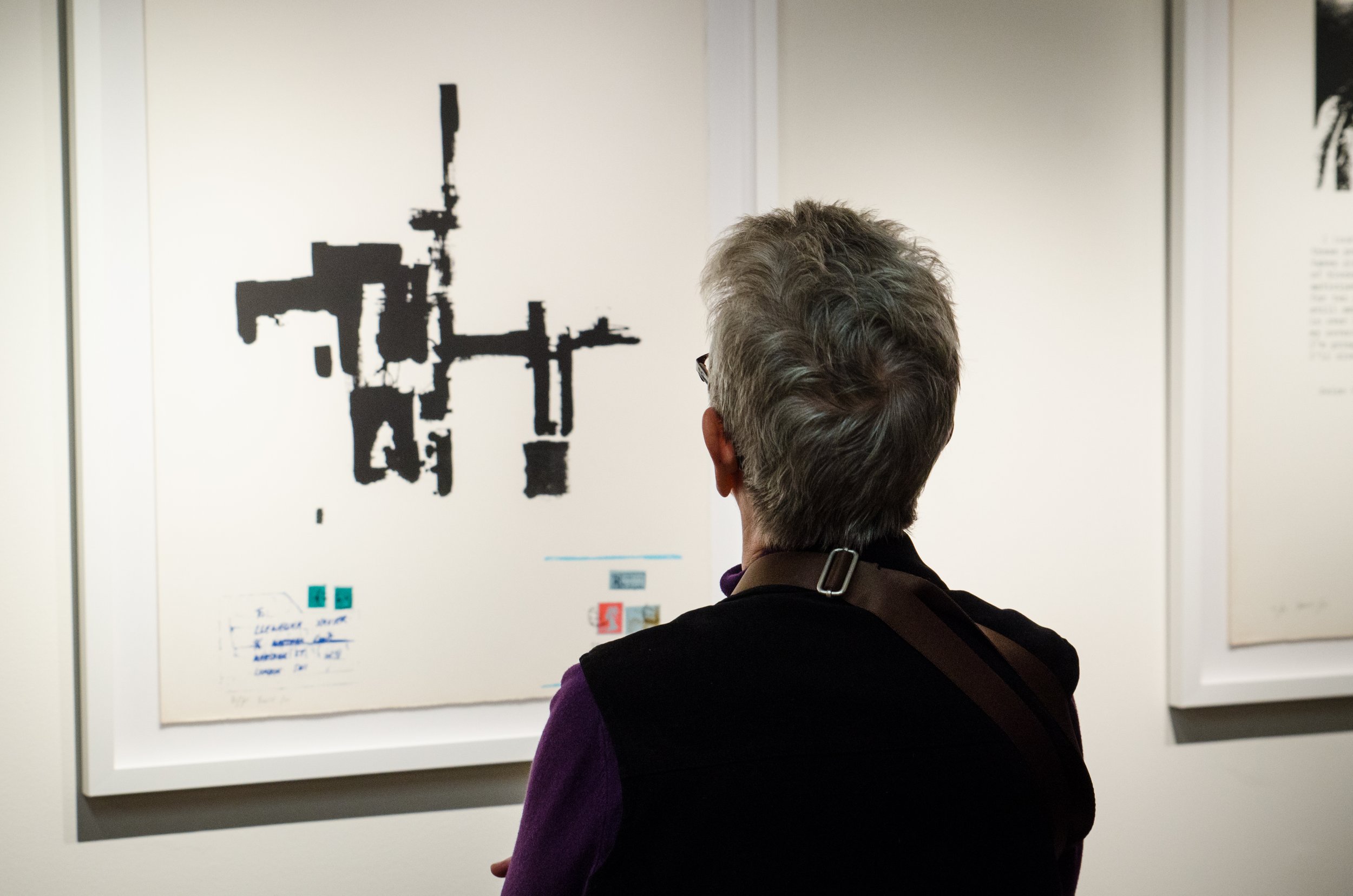ART MEETS ACTIVISM
January 17 to August 12, 2017
Idea Lab
Born in 1945 on the small Eastern Caribbean island of Saint Lucia, Llewellyn Xavier left his home when he was sixteen, to work as a farm apprentice in the nearby nation of Barbados. There, he received a box of watercolors as a gift—setting him on the path to using art as a tool to explore the world around him. Initially Xavier was drawn to the natural environment, depicting the tropical scenery of Barbados. He earned a reputation as a talented landscape painter in the region, eventually garnering enough support from patrons to travel the globe.
In 1968 Xavier moved to London, where he was influenced by the racial tensions that led to the passage of that year’s Race Relations Act as well as by the Civil Rights Movement in the U.S. He used photographs and news clippings to create silkscreen prints and mail art to protest racial discrimination and police brutality, particularly against Black immigrants in the United Kingdom.
The works on view here, from the George Jackson Series, demonstrate the artist’s affiliation with the Black Arts Movement, whose goal was to use art as an activist tool for the betterment of Black people. Xavier was inspired to correspond with Jackson after reading the activist-author’s Soledad Brother (1970). In the months following Jackson’s death in 1971, Xavier created these silkscreen prints. The works take the appearance of collages in which various visual ephemera—photographs of Jackson, newspaper articles covering his wrongful death, surveillance stamps from prison, handwritten envelopes, and excerpts from Jackson and Xavier’s letters—seem to be scattered across a table or tacked to a bulletin board.
George Jackson: Activist
George Jackson (1941–1971) was just sixteen years old when he was arrested for stealing $70.20 from a gas station. He was convicted and given a sentence of one year to life, which he served at two California state prisons, Soledad and San Quentin. While incarcerated, Jackson became an activist-leader of Soledad’s Black and Chicano inmates. His letters were compiled into two volumes, Soledad Brother: The Prison Letters of George Jackson (1970) and Blood in My Eye (1971). He maintained epistolary relationships with fellow activists and supporters outside of prison. Along with other powerful works of writing, performance, and visual art, Jackson’s books were part of a renaissance in prison art, encouraged by the Black Arts Movement.
Jackson’s case was reviewed annually, but he was never released. In January 1970, Jackson and two other men were accused of murdering a prison guard, days after a guard had killed three Black inmates. Within weeks, the case of the Soledad Brothers emerged as a political cause célèbre. That summer, Jackson was transferred to San Quentin. Three days before he was due to stand trial, during what has been described as an attempted escape, Jackson was killed by prison guards.




